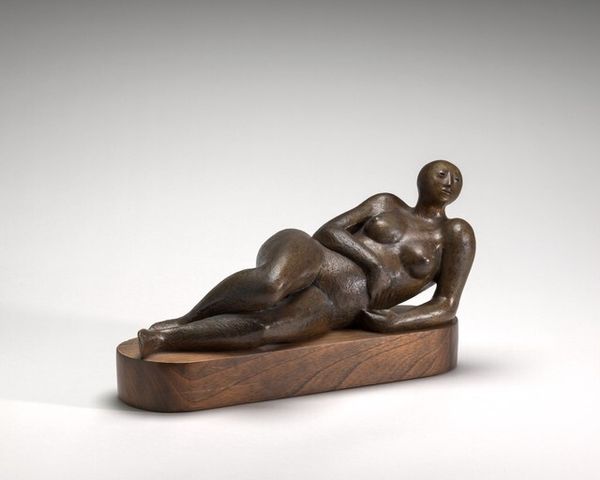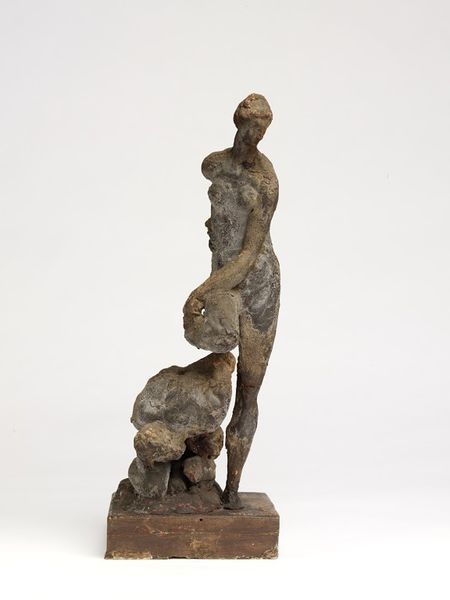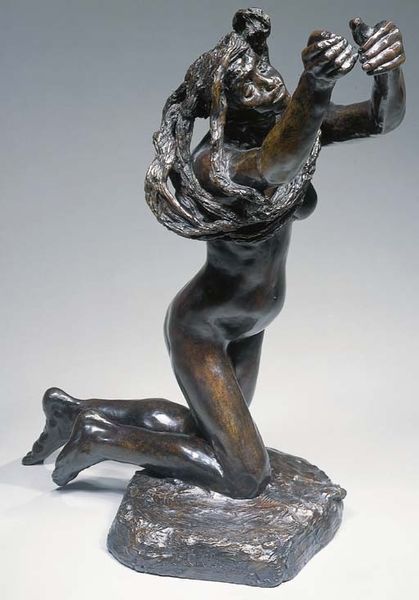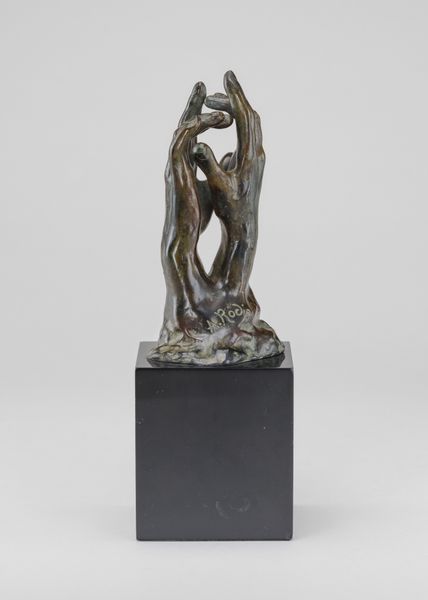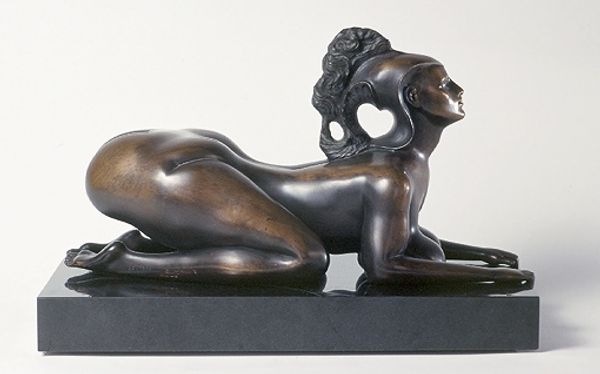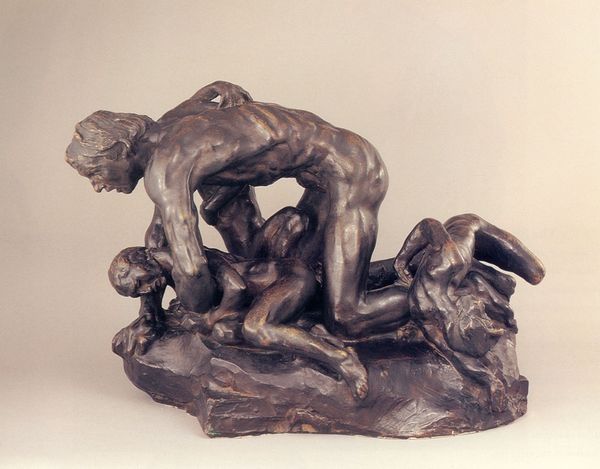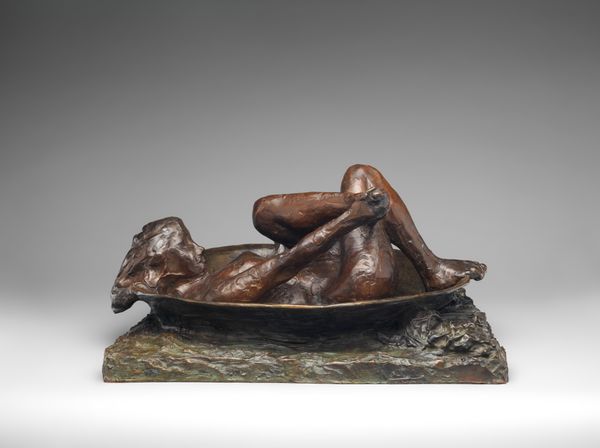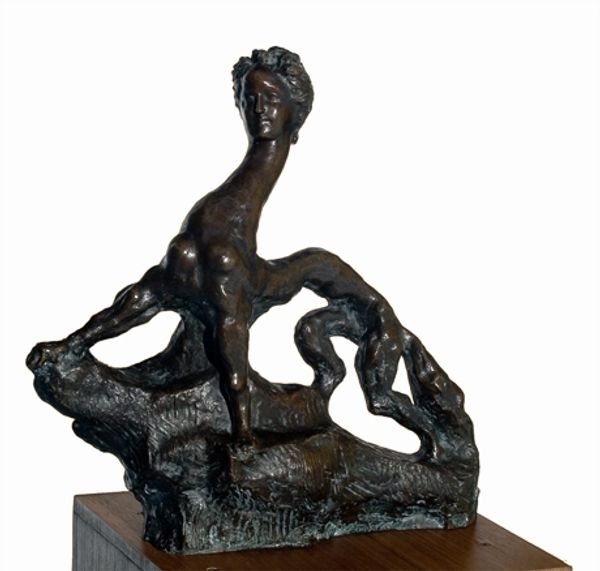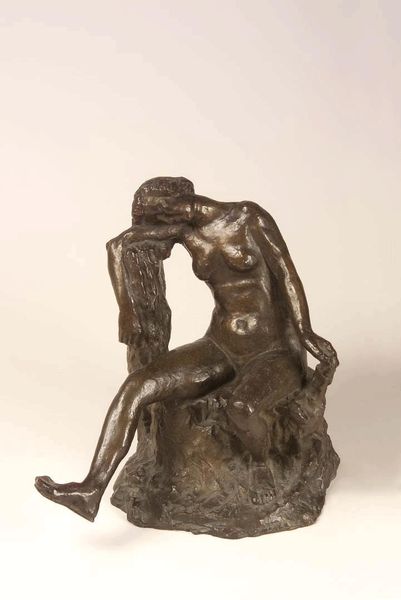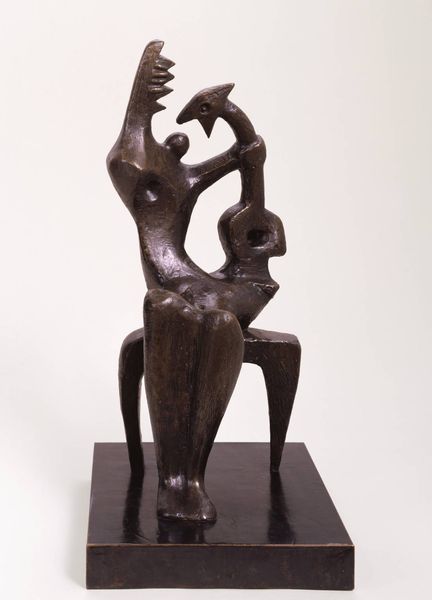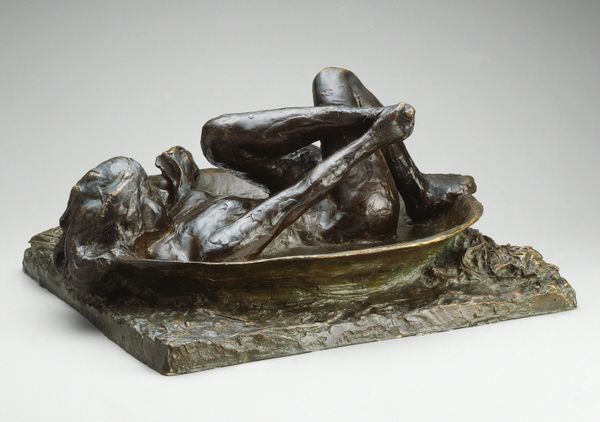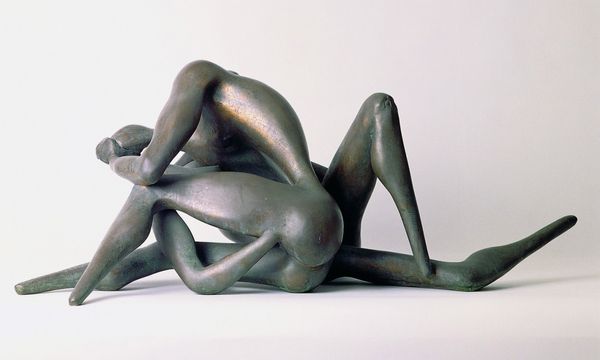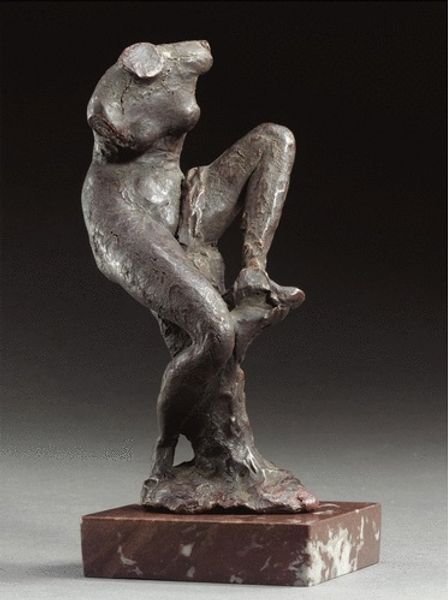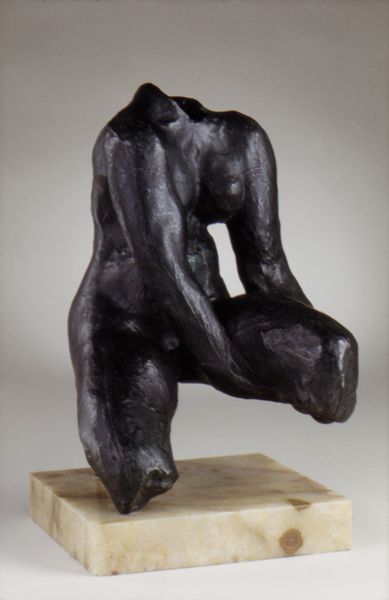
carving, bronze, sculpture
#
cubism
#
carving
#
sculpture
#
bronze
#
figuration
#
sculpture
#
abstraction
#
modernism
Copyright: Henri Laurens,Fair Use
Curator: Henri Laurens's "Eventide," created in 1935. It's a bronze sculpture that beautifully marries figuration with abstraction. Editor: It feels surprisingly peaceful for a Cubist sculpture. The reclining form is simplified, almost elemental, but there’s also a distinct heaviness in its bronze material. Curator: Laurens was deeply engaged with the material possibilities of sculpture. Bronze casting allowed for both precise detail and textural richness. The tactile quality here encourages the viewer to consider the processes of molding, shaping, and, ultimately, the economic dynamics behind bronze production. Editor: For me, it's all about the curves and voids. The interlocking forms create a sort of visual poem about the female body, reduced to essential shapes. Does this speak to archetypes of fertility or earth mother figures in some way, pulling from subconscious cultural memories? The smoothness also seems symbolic; bronze has always been such a loaded material representing not only authority, but now rendered soft with curves—powerful yet delicate. Curator: Yes, while it could allude to those symbols, one shouldn't ignore the ways the sculpture references the socio-political context. Laurens created this during a time of global economic turmoil. Its smoothness contrasts against the grit of the time, almost deliberately challenging traditional high art forms given how reliant they often were on laborers during their creation and the purchasing power of art patrons at the time. Editor: Do you think the title, "Eventide", is connected? Dusk, a moment of rest, and perhaps even oblivion... perhaps an omen looming due to these hardships of the period? Curator: Precisely. It highlights that complex relationship between materials, process, and production—one can choose to view the sculpture through its inherent materialism or the deeper subconscious readings you brought to light, Editor. Editor: A sculpture, then, not just of bronze, but of our history—both internal and external. Curator: Indeed. It's a potent reminder that the meaning lies as much in the material conditions of creation as in any singular symbolic interpretation.
Comments
No comments
Be the first to comment and join the conversation on the ultimate creative platform.
